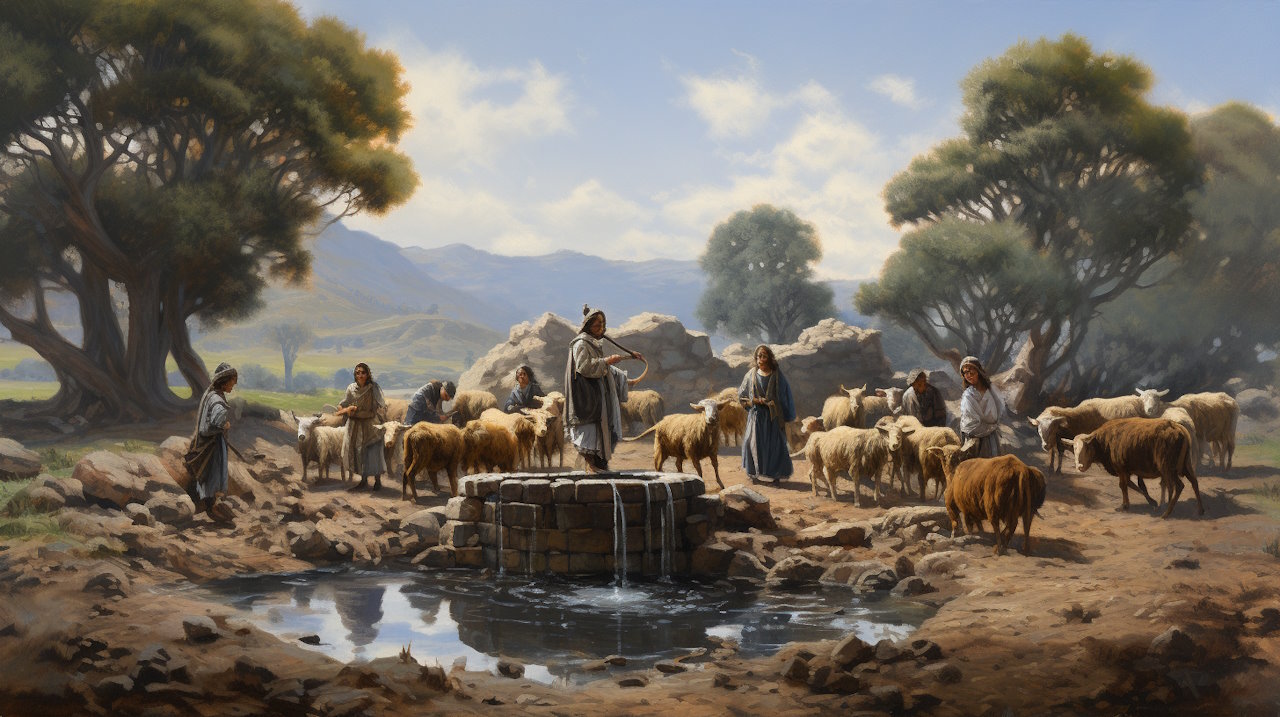
The Glory of YHVH Elohim
(Ascending the Mountain with the Offering)
Primary Content (From 1 Sefer Moses, the Book of Beginnings):
- Chapter 31 – The Climb or The Ascension
- Chapter 32 – In Mourning
- Chapter 33 – Given to Drink
- Chapter 34 – Journey Home
- Chapter 35 – The Well of Living Water
- Chapter 36 – Jacob and Esau
Additional Reading (Comparison Texts):
- Genesis 23-26 from the Inspired Version of the Bible
Kabbalistic Concepts:
- Ascension
- Glory
- Living Water
- Seeking the Face of YHVH
- Shekinah
Notes Before Reading:
Sorry about how large the reading is for this section. I tried to divide the content for each of the discussions on chapter boundaries using both the Inspired Version of Genesis and the chapters in the plates of brass, and make some effort to create lesson plans that didn’t divide up chapters from either of those two sources. In most cases, that made for reasonable sized lessons, but these chapters don’t sub-divide easily. So, … I just included them all in one discussion.
Engage:
Engage the Concepts through Comparison
Jacob and Esau are obviously intended to be polar opposites. What are we supposed to learn from the various characteristics of these two men that are emphasized in the narrative we have received? Is one “good,” and the other “bad” in some way? Are they just “different” from each other? Are we supposed to emulate the one and not the other? Are we supposed to liken them to ourselves somehow? What do we learn about each of them by comparing and contrasting them against each other?
Engage the Spirit through Contemplation
There are two kabbalistic concepts in the reading for this discussion that I think are worth your consideration:
In 32:17-20, they use the memory of Sarah and the characteristics that she embodied as a way of introducing the attributes of the “Shekinah”. The Shekinah is a concept that is often difficult to grasp to those who are new to Kabbalah, and this passage is a good place to ponder upon as you begin to allow this emanation of the divine feminine to take form in your mind’s eye.
In 34:11-28 The Glory of the heavens is sent down to the earth. This entire passage is deeply mystical, and I invite you to ponder on it as you consider what “glory” is. What form does it take when it is in the heavens? What form does it take when it is on earth?
Engage the Group through Discussion
When you meet together as a group to discuss the content of these chapters, here are some ideas to help get the discussion going:
- One of the significant differences between what we read on the plates of brass and what we had before we received them is the order in which the content is presented. The timeline of Sarah’s death (and other things) are presented in a different order. Do you think there is any significance in the change? If so, what difference does it make?
- The plates of brass spills a decent amount of new ink on the idea that God never really told Abraham to sacrifice Isaac, and it was all a misunderstanding. Does that new way of looking at it change anything (besides helping us feel just a little better about this complicated story)?
- We have now seen the Garment given to Adam and Eve passed through their descendents for 4 dispensations. Why do you suppose we get so much new detail about the garment as it moves through history? In what way does knowing its path teach us anything that applies to our life?
- In 35:30-32, we learn that these wells are intended to be interpreted as an allegory about living water. What does the story about the wells teach us? How can we apply it today?
- In 36:5, it describes how Rebekah “inquired of the Lord” about what was going on in her womb. It says she burned incense, and sought the face of YHVH. What do you think of this description of “inquiring of the Lord”?